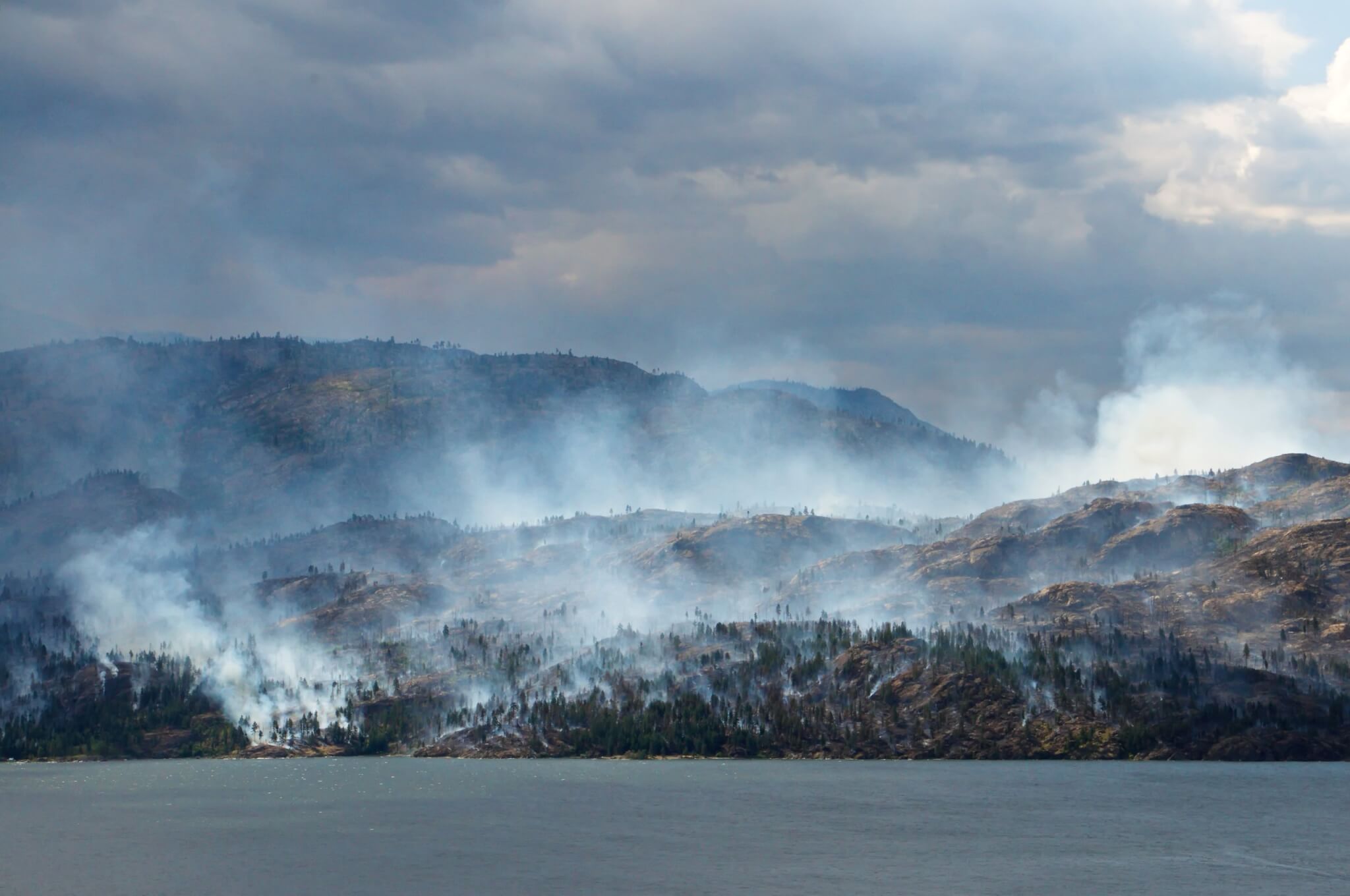

Allianz’s Climate Risk Lead Bastian Manz explains how its solutions help provide forward-looking insights to deal with the impact of climate change.
Wildfires in Canada, floods in Pakistan, droughts across Europe. Judging from the natural catastrophes that occurred in the past few months alone, it is obvious that climate change is already leaving an indelible mark on how we live.
But while the daily news and our own personal perception gives credence to what scientists have been telling us for decades – that the world is, indeed, getting hotter, how should the insurance industry respond to what is surely one of the largest challenges of our lifetime?
An industry as highly regulated as the insurance needs to be hyper-precise and clear about defining and planning for expected risks. At Allianz we say that our purpose is to secure the future of our customers, and this is only possible with the help of deep scientific insight into how the risks our customers face are evolving over time.
When it comes to assessing the risk of the changing climate, we need to gain insights into how physical risk is changing in our warming world, and we need to be able to translate those insights into our business processes. We need measurable results we can already use today for our insurance and investment customers. In essence, weneed to stop looking only to the past to understand the risks of tomorrow.
The answer we have developed at Allianz Re is an in-house approach to analyse the physical climate change risk of our insurance and investment portfolios. We have named this approach Allianz Climate Change Risk Solutions (ACCRiS). ACCRiS is about delivering forward-looking scores and other metrics that help us to assess the impact of climate change and allow us to apply this knowledge directly to the relevant business processes. We want to be able to measure this impact beyond individual risks and better understand the risk potential of the future. ACCRiS’ output provides simplified estimates of losses for each location, risk, asset, and peril, combined with an uncertainty estimate around those metrics. Thereby, it by design explicitly differs from solutions providing some form of subjective index of a peril.
How ACCRiS works
At Allianz we already have an approach that reflects the current status of climate and other natural catastrophe risks, the Allianz Global Hazard Maps. These maps provide our operating entities around the world with a risk score that delivers a technical price for natural catastrophe risks at any given point on the globe. Here, a frequency-severity framework is employed to combine hazard layers with peril-specific vulnerability modelling. Underwriters can apply the scores supplied by the global hazard maps as a factor in their pricing calculations, thus adding an important risk-adequate factor to their process.
By adding climate models that enhance our global hazard maps with a forward-looking view, we now can produce metrics and scores for future-based decision making. ACCRiS illustrates how the risk profiles will develop over the next decades due to climate change and can therefore help identify those areas and assets most prone to the impact of climate change.
This information can be used to support our customers with recommendations for concrete adaptation measures, which will support keeping the cost of climate change manageable.
ACCRiS’ source data for the physical climate impact analysis are peer-reviewed scientific publications of climate change impact modelling studies. The climate scenarios used in these studies are typically the representative concentration pathway (RCP) scenarios. RCPs describe different climate futures, representing a range of possible radiative forcing values for the year 2100 that depend on the volume of greenhouse gases (GHGs) emitted until then. By linking our climate change impact modelling to the projected changes in global temperature, we can adapt our scenario modelling to be closer aligned with any degree-based climate scenarios, such as those defined by regulators, e.g., the Network for Greening the Financial System.
Use cases for ACCRiS
Integrating our metrics can be applied to activities like distribution and sales, product development, underwriting, (regulatory) reporting and risk consulting services, and investment and asset management. In our asset management business, our approach allows us to analyse the expected climate change impacts over the investment lifetime of individual investments, identifying concentrations/accumulations across investment portfolios in terms of physical climate risk and its changes and, ultimately, steer investments and define adaptation plans and prevention measures for existing investments. The application of ACCRiS has already started to show effect in our decision-making processes, but its full extent still needs to be explored.
ACCRiS is also being used to address regulator climate stress tests, for example as requested by the Prudential Regulatory Authority for the climate biennial exploratory scenario in the UK, or the Monetary Authority of Singapore’s climate stress test. The flexible design allows us to analyse climate change impacts at the location scale for regulator-defined scenarios and to understand impacts on a portfolio level.
The data generated with ACCRiS showed the Asia Pacific region is subject to increasing flood and tropical cyclone risk across the entire region, with significant regional differences in loss drivers and peril development. The results of such stress tests will offer a benchmark to improve the sustainability and resilience of our portfolio with respect to physical climate risks and will inform our mid to long-term business strategy, while also providing us with better insights on how to consult our customers on their individual climate risks.
ACCRiS is also being used to improve our understanding of climate risks for coastal flooding by our operating entity in the UK. The metrics generated with ACCRiS will support underwriting decisions and help with portfolio assessment and risk controlling, along with giving an overview of accumulation areas within the UK.
Protecting our customers’ property is at the heart of our business, and we see potential in employing the insights gained through ACCRiS to offer better support to our customers in keeping their property safe.
By embedding ACCRiS in the underwriting decision-making process, we can now highlight emerging risks, satisfy regulatory requirements, and analyse the number of locations in each region that are at either a higher or lower risk in the future.
Scientific forward-looking approach
We believe that there are many potential benefits both for our customers and the way we do business at Allianz within the application of ACCRiS. With ACCRiS we have the foundation on how to deal with climate risks. Now we are looking at use cases on how to best apply this information and embed it into our business processes, from managing our insurance portfolios and helping underwriters and decision makers understand how different climate change scenarios will affect claims in the future, to supporting our customers with improved risk consulting services.
While the best way to guard the future of our planet against climate change is to reduce GHG emissions, we must equip ourselves with the knowledge and the expertise on how to deal with the changes to come. ACCRiS is giving us the right approach to make the right decisions for the future. Our flexible approach will allow us to address changes both in regulatory requirements and evolving climate risks.
Climate change will continue to be a challenge that we all need to face. The science on exactly how a changing climate will affect our world is constantly evolving. ACCRiS will help us to make these changes visible and measurable, allowing us to remain the reliable partner that our customers have turned to in the past for many years to come.
 |
Bastian Manz
Climate Risk Lead – Allianz Re
Email: [email protected] |
-
QBE | Elevating customer experience, humanising claims: QBE Asia’s ‘Solutions in a Box’
Vastly improving turnaround times and personalising service delivery, QBE Asia’s award-winning, end-to-end bundled claims solutions is a game-changer for the insurance industry.
-
Beazley | What does cyber protection look like from day 1 to day 600 and beyond?
Cybersecurity is no longer just an IT concern, but a governance issue that belongs on the boardroom agenda.
-
Sedgwick | Preparing for the next storm
Insurance industry needs to recalibrate, invest in innovation and strengthen systems, talent and data practices.
-
Peak Re | From climate modelling to market opportunity: Forging a new clarity on Southeast Asia’s climate risk
Southeast Asia's protection gap: a crisis of clarity, not just capital
